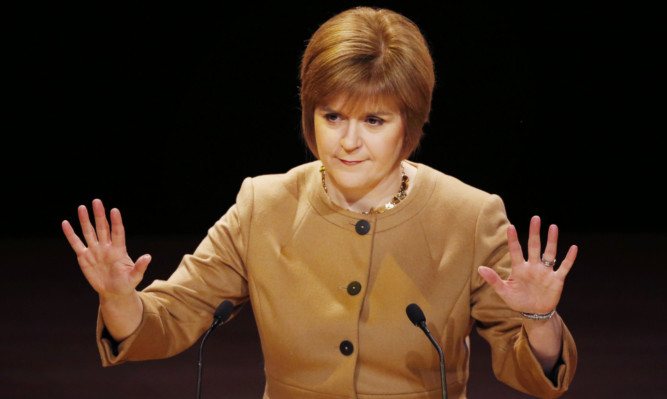An independent Scotland would not need to sign a new accession treaty to be a member of the European Union (EU), according to the Deputy First Minister.
Nicola Sturgeon said the Scottish Government was arguing for a “continuation of the status quo”, which would require negotiation but not a “full-blown accession”, if the country votes to leave the UK.
Her comments came as it emerged the SNP administration has appointed an expert on European law to help them engage with the EU in the run-up to the independence referendum.
Drew Scott, professor of EU studies at Edinburgh University, will advise ministers on European treaties as they prepare to negotiate the terms of entry into the EU if Scotland votes yes to independence.
In an interview published in The Times today, Ms Sturgeon said: “There is nothing in any of the European treaties that would provide for a scenario where part of a member state was cast adrift from it, simply because it exercised its democratic right to self-determination.
“We are going to be simply arguing for a transition from membership as part of the UK to membership as an independent country, but on the same terms as we were a member as part of the UK.
“We’re simply arguing for a continuation of the status quo, so it would require negotiation, other countries would of course have a say on this, but we’re not talking about an accession.”
Scottish Labour’s Patricia Ferguson described the issue of Europe as an “open wound” for the SNP.
She said: “Nicola Sturgeon said an independent Scotland would get automatic entry to the EU – which was completely wrong. Alex Salmond said he had legal advice on the issue – which was completely untrue.
“The truth is that if Scotland left the UK we would have to apply to join the EU. That is what the president of the European Commission has said. That is what the overwhelming amount of legal opinion says.
“But Nicola Sturgeon can’t admit the truth and just continues to make it up as she goes along.
“Almost every time she says something about the EU she is proven wrong and then makes up another tall tale.
“Nicola Sturgeon’s opinion on the EU isn’t news. The day she tells the truth about it will be.”
